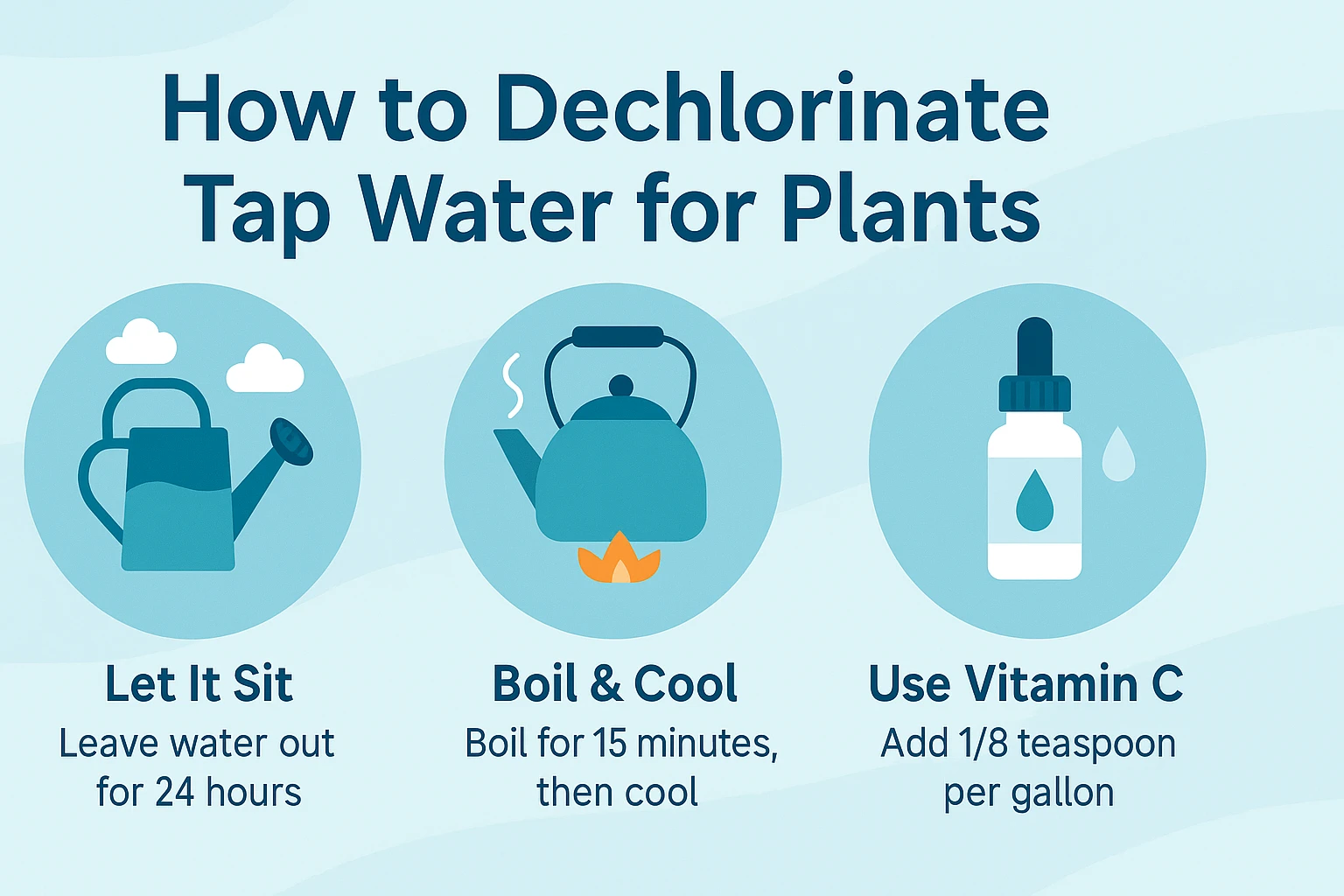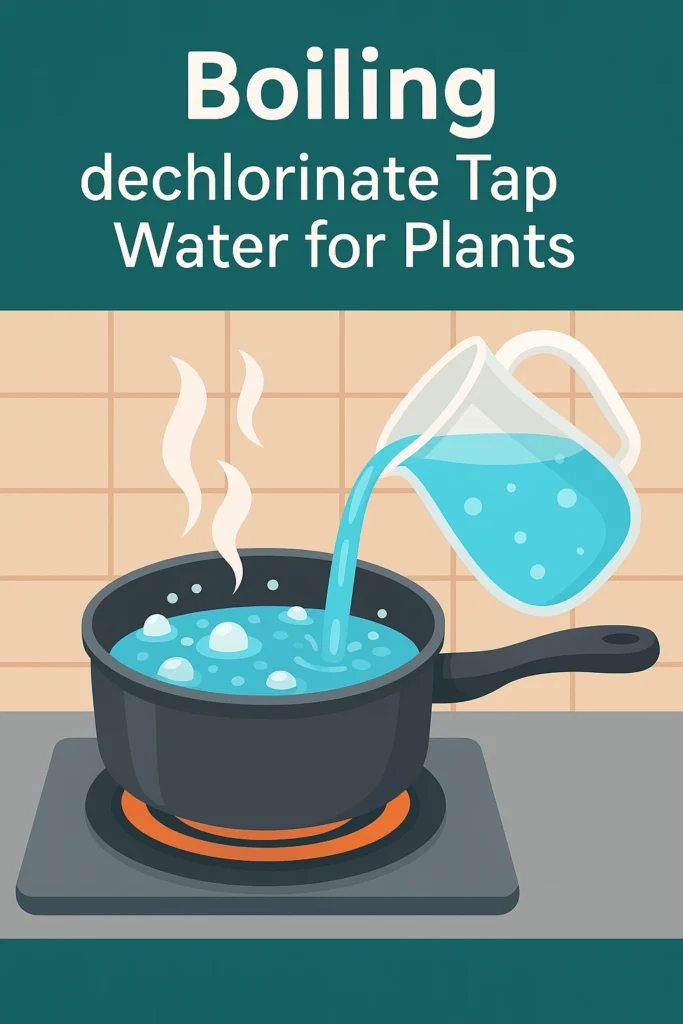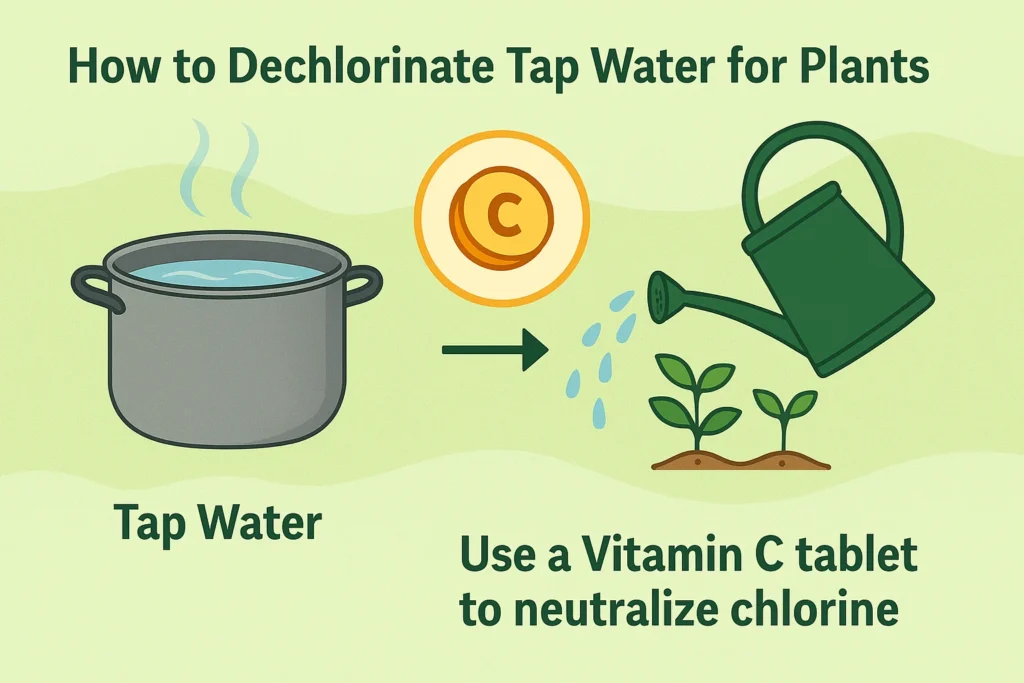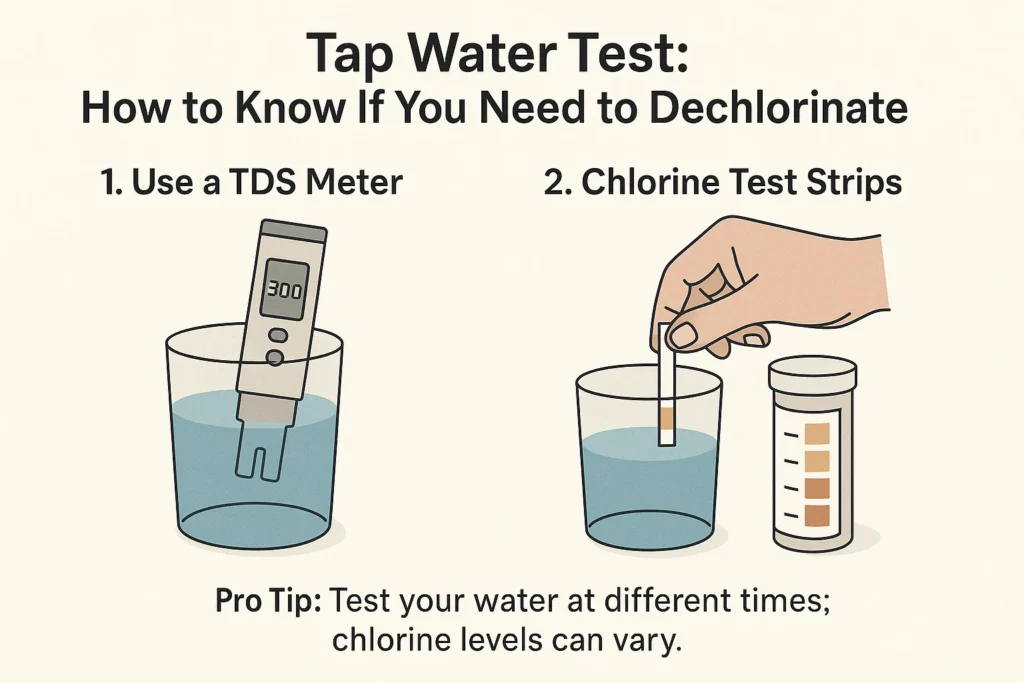How to Dechlorinate Tap Water for Plants: Safe, Easy Methods for Every Gardener

How to dechlorinate tap water for plants? To dechlorinate tap water for plants, either let the water sit in an open container for 24 hours, boil and cool it, or add crushed Vitamin C tablets. These methods remove chlorine, making your water safer for plant health and soil microbes.
It’s a strange thought—especially when the same water you trust enough to drink is what you’re pouring into your prized pothos or that stubborn basil on the windowsill. But hidden inside each sip from the tap is a quiet disruptor: chlorine. Harmless to humans in small doses, yet potentially destructive to the delicate living web inside your soil.
A few years ago, I couldn’t figure out why my new herbs kept yellowing and stalling, even though I was doing “everything right.” I watered them regularly, gave them sun, even whispered encouragement. The culprit? Tap water. Once I started letting it sit out overnight—just a simple shift—everything changed.
What I didn’t realize then is that chlorinated water doesn’t just hydrate; it also sterilizes. It strips the soil of beneficial bacteria and fungi, the very life forms that make nutrients available to roots. If you’ve been noticing your plants surviving but not exactly thriving, this tiny chemical might be the hidden reason.
In this guide, we’ll explore exactly how to dechlorinate tap water for plants, which methods work best, and whether you need to worry at all.
Table of Contents
Why Dechlorinate Tap Water?
There’s a quiet war happening in your soil. On one side, you have beneficial bacteria and fungi—the kind that helps roots absorb nutrients, manage pH, and resist disease. On the other side, you’ve got chlorine: a sterilizer designed to kill microorganisms.
Now, does watering your plant once or twice with tap water destroy its ecosystem? Probably not. But daily or weekly watering over months? That’s when you might notice yellowing leaves, slowed growth, or just a general “not thriving” vibe.
That’s why many plant owners—especially those growing in hydroponic systems or caring for sensitive houseplants—start looking into how to dechlorinate tap water for plants.
5 Best Ways to Dechlorinate Tap Water for Plants
Letting the Water Sit Out (Simple, Free, and Often Enough)
This is the oldest trick in the book. Fill a container with tap water, leave it uncovered for 12–24 hours, and let time do its thing. Chlorine, being volatile, evaporates naturally into the air. It works surprisingly well in most cases—unless your city uses chloramine.
It’s a great option if you’re just starting out. Use our Indoor Plant Watering Calculator to estimate how much water your plants typically need per week, so you can prep accordingly.
Boiling and Cooling the Water (Faster, But Tedious)
If you’re in a rush, boiling your tap water can force chlorine to escape more quickly. Just remember to let the water cool before using it, unless you want to cook your roots.
Does it work for chloramine? Partially. Boiling helps, but it’s not a guaranteed fix unless done for over 20 minutes—and even then, not all compounds are removed.
Our take? This works well for emergency watering or smaller volumes, especially for indoor plants.
Activated Carbon Filters (Effective and Multi-Use)
An under-sink filter, a pitcher filter (like Brita), or a hose-end carbon filter can effectively reduce both chlorine and chloramine. These filters absorb chemicals using activated carbon granules and are a popular choice for more serious plant parents.
Pro tip: If you’re already using a filter for drinking water, it’s probably good enough for your plants too.
Link this method with our Soil Quality Calculator to check if your plant’s substrate is already struggling—poor-quality or depleted soil will show stress faster from chlorine exposure.
Reverse Osmosis (RO) Systems
Reverse osmosis filters push water through a semi-permeable membrane, removing chlorine, chloramine, fluoride, and many other impurities. It’s one of the most thorough methods, but also one of the most expensive.
Should every gardener use this? Not necessarily. It’s overkill for most, but for hydroponic systems or very sensitive species, RO can provide peace of mind.
Vitamin C Method (Yes, Really)
One crushed 1000mg Vitamin C tablet can neutralize the chlorine in about 40 gallons of water. This method works for both chlorine and chloramine and has gained traction among fishkeepers and hydroponic growers alike.
Does it sound too easy? Perhaps. And honestly, the science is still debated in gardening circles, but anecdotal results are promising. As a one-off or budget solution, it’s quirky but effective.
Tap Water Contaminants to Watch Out For
While chlorine gets the spotlight, it’s not the only additive. Fluoride, heavy metals, and water softeners can all play roles in plant health. Some gardeners swear by rainwater or distilled water simply because it’s clean. Others will tell you they’ve watered with tap water for 10 years and their pothos is still alive.
The truth lies somewhere in between.
Recent studies have explored an eco-friendly method to remove chlorine from tap water using food-waste-derived biochar, offering a sustainable alternative for environmentally conscious gardeners.
Tap Water Test: How to Dechlorinate Tap Water for Plants?
Before you commit to any dechlorination method, it’s worth asking—do you even need to? The answer depends on what’s actually in your tap water, and that’s where simple testing tools come in.
1. Use a TDS Meter
A TDS (Total Dissolved Solids) meter measures the amount of minerals, salts, and metals in your water. While it doesn’t directly detect chlorine, it gives you a general sense of water purity. If your reading is consistently high (above 300 ppm), it may indicate an excess of additives—including chlorine or chloramine.
How to use it:
- Fill a clean glass with tap water.
- Insert the meter and wait for the reading.
- Compare against your plant type needs—many houseplants prefer 100–250 ppm range.
🟡 Caveat: A low TDS doesn’t mean no chlorine. It’s just a helpful first step.
2. Chlorine Test Strips
These are inexpensive and more precise for this purpose. They detect both free chlorine (the kind that evaporates when sitting out) and total chlorine (which includes stubborn chloramine).
How to use it:
- Dip the strip into a sample of your tap water.
- Wait 10–30 seconds.
- Match the strip color to the chart provided.
If you see any detectable chlorine above 0.1 ppm, you might consider dechlorinating—especially for seedlings, tropical plants, or hydroponic setups.
Pro Tip: Test your water at different times of the day or after heavy rains. Municipal chlorine levels can fluctuate.
Should You Always Dechlorinate?
Here’s where things get fuzzy.
If you’re growing in nutrient-rich soil outdoors, your plants can probably handle occasional chlorine exposure. The ecosystem in the soil can buffer small imbalances. But if you’re nurturing seedlings, microgreens, or using hydroponics indoors—how to dechlorinate tap water for plants becomes a much more relevant question.
There’s no one-size-fits-all answer. Some plants are more tolerant. Some soils are more forgiving. Some cities use more aggressive water treatments. You won’t know until your plants show you.
How Much Water Do You Actually Use?
Most people overestimate how much water they need to dechlorinate. Our Plant Watering Calculator help you determine exactly how much you’re working with. That way, you’re not preparing 10 gallons of water when you only need two.
Frequently Asked Questions
Does letting tap water sit remove chlorine?
Yes, but only chlorine—not chloramine. 24 hours is usually enough.
Can I use Brita-filtered water for plants?
Yes. Most pitcher filters use activated carbon, which removes chlorine and some chloramine.
How do I know if my city uses chloramine?
Check your local water quality report—it’s usually available on your city’s utility website.
Is rainwater better than tap water for plants?
Often, yes. It’s free of chlorine and typically slightly acidic, which many plants prefer. But it can also contain pollutants depending on where you live.
Final Thoughts
So, should you dechlorinate every drop of tap water before it touches your garden? It depends. If you’re growing hardy outdoor crops in compost-rich soil, you might never notice a difference. But if you’re cultivating delicate indoor plants or experimenting with hydroponics, even trace amounts of chlorine could matter.
At the end of the day, it’s less about perfection and more about consistency. Your plants won’t judge—but your results will speak for themselves.



